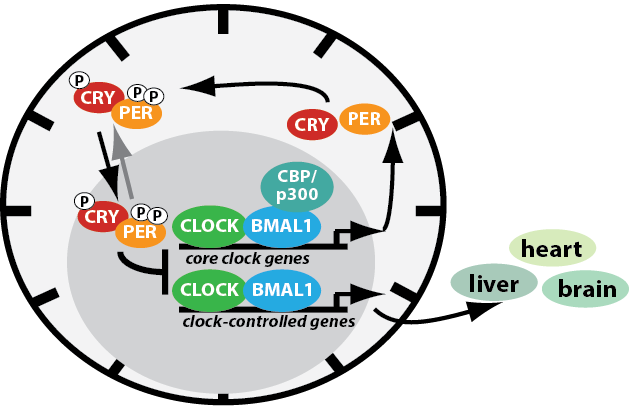
CLOCKWORK: EXPLORING ACTIVATION MECHANISMS OF THE CIRCADIAN TRANSCRIPTION FACTOR CLOCK:BMAL1
Physical and Biological Sciences
Chemistry 195A-B-C, Senior Research
All living organisms experience daily changes in light and temperature that influence mood, metabolism, and overall health. In order to successfully synchronize behavioral and biochemical processes into rhythms that coincide with external light/dark cycles, most organisms have internal molecular clocks. These circadian (about a day) clocks regulate biology throughout a 24-hour period. Disruption of circadian rhythms leads to diseases throughout the body, suggesting that we might be able to target molecular circadian clocks to make systemic improvements to human health.
The circadian clock is generated by a set of so-called clock proteins in a transcriptional-translational feedback loop, which drives circadian rhythms of gene expression at the single cell level. However, we still don’t understand the dynamic processes in this feedback loop that are important for keeping track of 24-hour time at the molecular level. My central goal is to determine the molecular basis for cooperative regulation of the circadian transcription factor CLOCK:BMAL1. Cooperative regulation leads to ultrasensitive, switch-like responses between ‘off’ and ‘on’ states of CLOCK:BMAL1 that are required to keep the transcription-based clock running day after day.
CLOCK:BMAL1 bind to adjacent E-box promoter regions on DNA and subsequently recruit transcriptional coactivators, such as CBP/300, to initiate transcription. CBP/p300 have at least four domains that can interact with transcriptional activation domains (TADs) on transcription factors, contributing to cooperative regulation. Our lab previously showed that BMAL1 TAD interacts with the KIX domain of CBP and p300. Currently, I am investigating the role of other domains within CBP/p300 that may interact with the BMAL1 TAD.
I cloned and developed expression and purification protocols to make the CBP TAZ1 domain, which took considerable effort because this protein is tricky to work with. In the end, I was able to purify reasonable amounts of the TAZ1 domain and validate that it was active and well folded. Using NMR spectroscopy, I identified a new interaction between the BMAL1 TAD and the TAZ1 domain. I determined binding affinities using our well-established fluorescence polarization assay. It was discovered that TAZ1 selectively binds to one conformation of the BMAL1 TAD that is needed for proper circadian cycling. These are exciting data because they provide the first evidence that CBP could use multiple domains to interact with CLOCK:BMAL1 bound at adjacent sites on DNA. Identifying the molecular basis for interactions between the circadian transcription factor CLOCK:BMAL1 and its coactivator CBP will represent a large step forward in our understanding of the circadian clock and enhancements to human health.